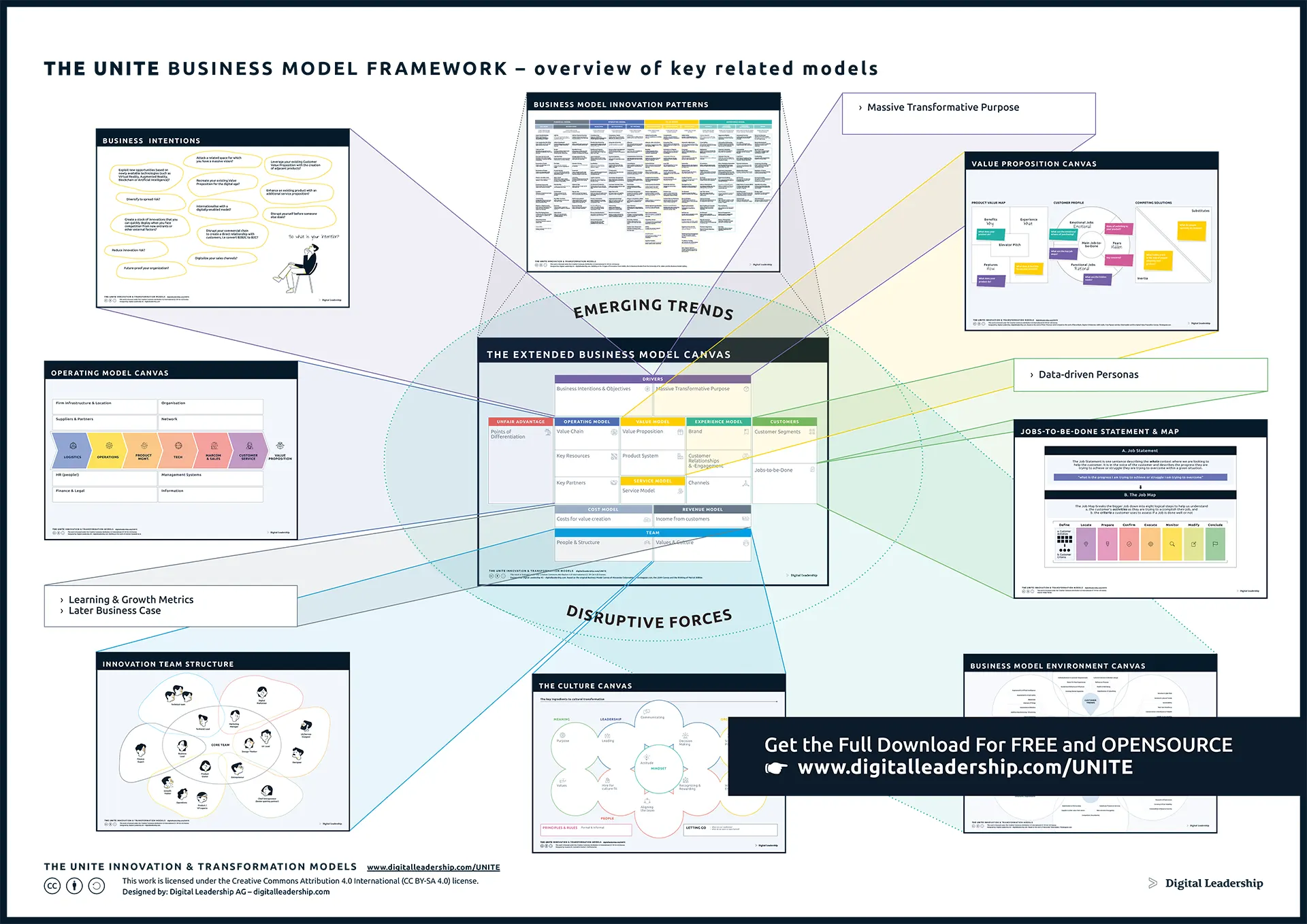Digitalization: How to Use Digital Innovation to Grow Your Business
Published: 27 October, 2021
Transformation

Table of Contents
Digitalization: How to Use Digital Innovation to Grow Your Business
You cannot speak about innovation without discussing digitalization in context. Today, almost every business model is, at least, partially digital, from supply chain integration to value proposition, marketing, and customer acquisition.
Additionally, many people believe their organizations are fully digitalized if one or two processes are digitalized. Unfortunately, this is not the case, so it makes sense to start with the basics and explain what we mean when discussing digitalization.
The best definition of digitalization is “the transition from the physical and biological world to the information world.” The reason to adopt this definition is that it encompasses the phenomenon’s social, business, technological, and strategic aspects. In addition, it provides a holistic perspective, emphasizing the overarching impact of this process. Digitalization has profound consequences for us as a society and for organizations, governments, the meaning of work, and many other things. Because we are focused on innovations within businesses, let’s understand what digitalization means in that context.
Digitalization surprised many organizations during the COVID-19 pandemic, as most businesses discovered they lacked digital capabilities. The pandemic made digital innovation become a necessity for business growth.
Many businesses are still unprepared for the digital age. The UNITE Horizons of Growth go into detail and provide you with a clear framework of how to improve, transform or innovate different sections of your business.
In this age, organizations that fail to embrace digital innovation can become obsolete. For example, Kodak, Circuit City, and Blockbuster became obsolete due to a lack of innovation. Given the importance of digitization and digital innovation in business growth, it’s essential to dive into the basics of digital innovation and how you can leverage it for business growth.
What is Digital Innovation?
Digital Innovation in business is the application of technology to solve existing business problems and improvise organizational practices. It is an ongoing and disruptive process that changes organizations and helps a business stay relevant and competitive.
A good digital strategy covers digital innovation initiatives such as:
- Switching from analog to digital processes
- Automation, connectivity, and data analytics
- Implementation of new software and platforms
- Development of a new technology
- Cloud migration
Every business needs innovation to launch new products & services successfully and improve operational efficiency and customer efficiency. To start your digital innovation journey, you need to focus more on the following elements – portfolio, platform, process, and people.
With the right platforms, processes, and people in place, you can drive digital innovation in your organization to create a portfolio of high-quality products and services.
Digitalization vs. Digitization vs. Digital Transformation vs. Digital Innovation
Most business leaders consider digital transformation, digitization, and digitalization to be the same. But this doesn’t seem right. Although the three concepts are related and connected, they are not the same.
Let’s see how they differ.
Digitalization vs. Digitization
Digitalization uses digital data and digital technologies to create new value-producing opportunities and transform the way businesses interact with their customers. On the other hand, digitization refers to the conversion of information from analog to digital formats.
In other words, digitalization isn’t possible without digitization. Digitization is more focused on the internal optimization of processes such as paper minimization and work automation. However, digitalization encompasses much more and involves companies’ interaction with their clients.
Digitalization vs. Digital Transformation
Although digitalization is the general term used for digital transformation, both differ in context. Digital transformation refers to the much wider use of cultural change and digital technologies. It is more focused on people than the use of digital technology. It demands core changes in the organization, backed by leadership.
Digital transformation focuses more on empowering employees with digital technologies to change the corporate culture.
Digital Innovation vs. Digital Transformation
Digital transformation and Digital innovation are also often used interchangeably. While both are similar concepts, slight differences exist between them.
Digital innovation is often a sudden change in response to a new or existing problem. But, on the other hand, digital transformation is a strategic journey leading to a fundamental change in the overall organization.
To put it in another way, digital transformation refers to an overall business renovation. In contrast, digital innovation is about changing individual areas of a business.
Types of Digital Innovation
The following three types of digital innovation create business growth and opportunities for organizations:
- Creating entirely new business models and processes
- Improving an organization’s current business model and processes
- Building on traditional business models and processes
Digital innovation gives your business a competitive advantage
Companies that fail to embrace digital innovation can lose their business to more innovative business competitors. For instance, Blackberry had a first-mover advantage in the smartphone industry. However, its resistance to change, innovation, and complacency let it fall behind competitors like Samsung and Apple.
It increases ROI across business expenses
Digital innovation improves equipment performance and restructures your internal processes. As a result, it’s a worthwhile investment for long-term financial gains, resulting in high ROI on all business expenses. Although digital business innovation may seem expensive in the short term, businesses that invest in new and innovative ideas will reap massively over time.
It Improves Productivity
Low employee productivity can increase your operation cost and reduce your overall revenue streams. However, businesses that invest in innovation can improve productivity in the following areas:
- Automation: technologies like machine learning and artificial intelligence can automate practically every task within your organization. This allows your employees to focus on the more strategic ones. Moreover, automation helps to reduce the chances of human error.
- Access to Big Data & Analytics: data and analytics are vital components of successful digital innovation that will help transform these data points into actionable insights.
It allows organizations to keep pace with changing customer expectations
In the post-COVID-19 pandemic era, customer expectations are high. Therefore, to provide them with personalized experiences, organizations need to prioritize digital innovation. This lets you analyze customers’ buying preferences and behavior, thus delivering individualistic experiences to all customer types.
Examples of Digital Innovation
Any new technology or digital business strategy can be considered a digital innovation.
Here are some examples of popular brands creating new technologies to keep their brands relevant in their markets:
Dominos Creating a Contactless Delivery System and its Own Mobile App
While many organizations suffered great losses in the form of decreased sales and revenue during the COVID-19 pandemic, Domino focused on its digital strategy to allow all its customers to place an order via Alexa, Twitter, Facebook Messenger, Slack, voice recognition technologies, and emojis. Massive investment in its contactless delivery system and app resulted in 80% of its customer transactions via the digital route.
Target Investing in its Mobile App
To increase loyalty enrollment, encourage more online shopping, and enable mobile payment for online and in-store purchases, Target consolidated all its apps into one called The Target App.
Customers could use the same app for online shopping for coupons, loyal rewards, in-store navigation, delivery, or pickup. In addition, it updated its point-of-sale systems simultaneously, using the same back-end technology for both in-store and mobile shopping.
IKEA partnering with TaskRabbit for Product Assembly
IKEA has been at the forefront of digital innovation. Its home planners, online catalogs, digital product design, and virtual reality show booths have gained global recognition.
IKEA saw this as an opportunity for product assembly and thus partnered with a mobile marketplace TaskRabbit. This bolstered its digital customer service capabilities as TaskRabbit matches freelance labor with local demand, thus giving IKEA an edge over all its competitors.
Walmart Using Digital Innovation to Compete with Amazon
The Walmart mobile app has blended traditional retail with e-commerce. It allows shoppers to add up prices on their shopping lists beforehand and then directly leads them to items on their list once they get into the store. Moreover, it started leveraging robots for clerical and routine tasks such as floor mopping and identification of out-of-stock inventory.
Tips on How Your Business Can Embrace Digital Innovation
Business analysts predict that by 2026, all organizations will transform digitally. Therefore, to remain relevant, every organization must understand how to embrace digital innovation.
Here are some tips that will help you create an effective digital innovation process for your business.
Invest in new technology and software
To remain relevant and be at the forefront of digital innovation, organizations must invest in new technologies and software to improve operational efficiency. Investing in the right technology will help you unify your business needs and include product lifecycle monitoring, cloud access, collaboration, and team management as core business concepts.
Build a digital innovation team
Build a small and focused team of professional and high-performing individuals from different departments who are committed to offering value to your organization. This team will put their heads together to identify the limitations of your existing business process and proffer solutions via effective digital innovation strategies.
Adopt an agile business model
As technology evolves rapidly, it’s important to make agility a critical aspect of your business to remain relevant. In an agile business model, organizations can identify new customer needs and periodically change strategies to solve such problems over time. Most organizations are creating incubator labs to brainstorm, experiment, and fast-track digital innovation.
Create a value-added or ROI system when prioritizing projects
Based on revenue generated from current projects, you need to create a value-added system for higher digital innovation ROI. This allows businesses to prioritize the projects that will make the highest returns, both short-term and long-term.
Create a digital adoption strategy for new processes and tools
Create a well-detailed, specific digital adoption strategy to make the best of your tech investments. When training your employees, a digital adoption system solution, such as Whatfix, can be your innovation partner.
Conclusion
Digitization and digitalization in business have a massive impact on innovations. As technology advances, it forces you to act and innovate. And once you start, it’s hard to stop. Continuous innovation allows you to become more aware of new opportunities and trends.
Global crisis such as global pandemic often forces businesses to innovate. Indeed, the cliché, ‘necessity is the mother of invention,’ shouldn’t be the sole reason to embark on digital innovation. Nonetheless, market forces, customer expectations, and business dynamics are changing rapidly. Therefore, organizations need to innovate digitally to stay relevant, irrespective of their industries.
Digital innovation is not meant to put you in a disadvantaged position. Instead, it empowers your organization to improve its resilience by preparing for the inevitable change coming. As a result, digital innovation can help you grow your business in ways you never imagined.
The UNITE Business Model Framework: A Framework for Innovation Success

Designed By: Digital Leadership AG

































 Book How to Create Innovation
Book How to Create Innovation